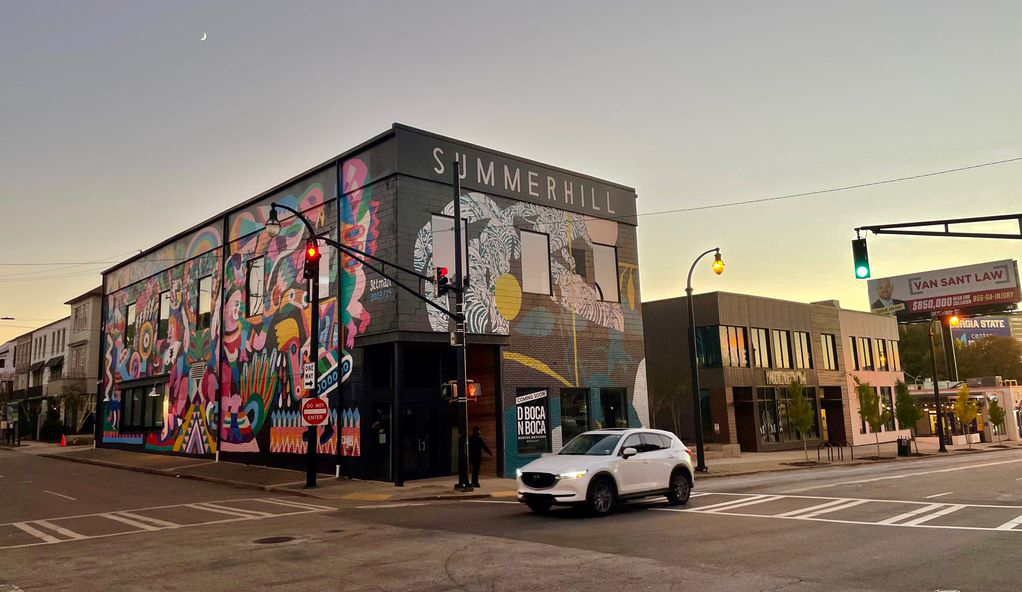New restaurants poised to invigorate historic Atlanta neighborhoods

Eateries in Cascade Heights, Summerhill and AUC have potential to transform neighborhoods.
In the middle of Atlanta’s Cascade Heights neighborhood is a triangular plot of land bordered by Beecher Road; Benjamin E. Mays Drive, home to the Providence Missionary Baptist of Atlanta church; and Cascade Road, on which sits a strip mall with tenants like CBD City and Celebrity Ink Tattoos.
There are a handful of restaurants popular with locals in the immediate area, including the Caribbean-inspired Spice House; Buzz Coffee and Wine, which hosts wine tastings, book club meetings and yoga classes; and longtime venerated soul food restaurant The Beautiful, with long rows of steamer trays filled with fried chicken, barbecue beef ribs and baked salmon.
It’s this historic Black neighborhood — former home of Atlanta notables Maynard Jackson, Hank Aaron and John Lewis — where lauded Atlanta chef Deborah Van Trece announced plans earlier this year to open her next restaurant on that unassuming triangle.
“It’s hard to be an African-American and live in Atlanta and not be familiar with this area,” she said. “I’ve been asked for years to open something in southwest Atlanta, but could never find the right space.”
Enter developer Shea Embry, who owned several parcels of property along Cascade and was looking for a Black, female chef to partner with on a restaurant. In March, the pair opened Oreatha’s at the Point, the name an homage to Van Trece’s mother. Developed with executive chef Christian “Lucke” Bell, the global menu includes dishes such as Tod Mun Pla Thai catfish with tamarind hot sauce, cauliflower coconut grits, curry coleslaw, and Parisian steak and frites with truffle béarnaise sauce.
Cascade Heights is one of several recent examples of neighborhoods previously overlooked by well-known restaurateurs and developers that have landed high-profile restaurants or larger developments with multiple food and beverage concepts.
It’s a trend that’s being seen across the country, said professor Cathy Yang Liu, chair of the Department of Public Management and Policy at Georgia State University. It was spurred in part when many businesses closed their retail spaces and moved to online-only business models during the pandemic, allowing restaurateurs to launch new concepts in those vacant buildings.
“Restaurants started to move in where other businesses once were and became anchors in those neighborhoods,” Liu said.
Even one anchor restaurant, Liu said, can change the landscape of a neighborhood by prompting other businesses to update their buildings, increasing foot traffic and bringing more businesses and investment to the area.
“What sometimes starts with one restaurant can end up having a bigger impact than that. With increased foot traffic, a whole street and even neighborhood may start to change.”
—–
Larger projects, like the 35-acre mixed-use Summerhill development near the former Atlanta Braves stadium, bring with them lots of development at once, jump-starting the economic cores of those neighborhoods and, in some cases, bringing with them needed services. But working with existing residents to ensure they’re part of the process is key, Liu said.
Developer Carter spent months learning about the “involved, dynamic neighborhood” while planning the Summerhill development, said David Nelson, executive vice president of Carter. The Georgia Avenue project includes corporate offices, apartments, retail space and a number of restaurants, including Little Tart Bakeshop, Wood’s Chapel BBQ and Junior’s Pizza. Southern National from James Beard-nominated chef Duane Nutter is set to open soon.
While the community has supported the project, Nelson acknowledges that working in historically underserved communities requires extra effort to make sure residents’ interests are served.
Transparency was a key component, he said. A Carter representative regularly attended the monthly Organized Neighbors of Summerhill meetings to provide updates on the project and get feedback from residents.
“Carter’s thoughtful and engaged redevelopment in Summerhill has helped us reintroduce our community to the region as the asset it is,” said John Helton, president of the Organized Neighbors of Summerhill, in a prepared statement. “Summerhill and our surrounding neighborhoods south of I-20 have been neglected and abused by decision-makers and developers for years, from interstate placement disrupting street grids to the stadium’s placement. We are centrally located to the interstate systems, the airport, downtown and Midtown. This level of attention and economic development is long overdue and more high-quality developers should be paying attention to the opportunities our neighborhoods present.”
Carter also worked with the neighborhood to help secure grants including a $200,000 award from non-profit Park Pride to improve neighborhood parks and partnered with MARTA to ensure that some of the transit group’s federal TIGER grant went toward getting rapid transit through Summerhill.
“There’s not really a silver bullet, but we try to be there to listen and partner together to try to figure it out,” he said.
Embry, who serves as a board member on the Cascade Heights Neighborhood Development Corporation (CHNDC), said it was essential to keep the organization updated throughout the planning process for Oretha’s “and listen to what the community wanted.”
She used as a guide a document created by the CHNDC, along with the Georgia Tech architecture department, based on a survey of what residents wanted to see in the neighborhood; one overriding desire was no more big box stores or national chains.
“I believe in this community so much,” Embry said of Cascade Heights. “I believe this area has the biggest ability because of the level of wealth and education to eliminate that total swing of gentrification that we’ve seen over and over across the country.”
Yvonne Zusel, The Atlanta Journal-Constitution
Full Article